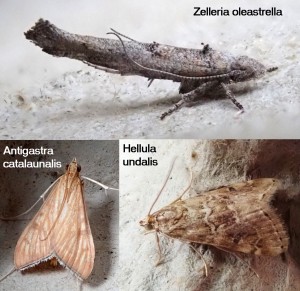The weather forecast suggests tonight will not be good for moth trapping so I report now for the month. Moths caught during October have fallen into three categories. regular autumn species, out of season species and immigrants.
There has not been anything unusual amongst the routine autumn species. Blair’s Shoulder-knot and Cypress Carpet have had a good year as too has Clancy’s Rustic, though this may be partly immigrant. I took my first November Moth on 12th along with the second Pale November for my home location. I have yet to see any later autumn species such as the December or the Umbers.
There have been a number of unseasonal (second or third brood) moths. These have included, Phyllonorycter salicicolella, Cedestis subfasciella, Ditula angustiorana, Lozotaeniodes formosana, Least Carpet, Treble Brown Spot, Swallow-tailed, Yellow-tail, Common, Buff, Dingy and Rosy Footmans, and the Dark Arches.
October has been the month for immigrants in 2018, however there is also promise for early next week too. The crunch period was from 10th to 14th, when strong southerly winds, that had carried over France and the Iberian Peninsula, hit the UK. Night-time temperatures were above 15 centigrade and above 17 on 12th here. Many of the regular immigrants for the UK were caught during this period. I did not trap on 11th, which unfortunately for me, saw a peak of Spoladea recurvalis that I missed out on. Immigrants have continued to trickle in (else have hung around) since the 14th. Out of my catches there were three species of particular note. Antigastra catalaunalis on 12th, Hellula undalis on 13th and Zelleria oleastrella on 25th. The Z. oleastrella is probably the rarest. It was first recorded in the UK in 2006 but does seem to have been found more commonly since then. There have been at least 11 records prior to mine. The moth can be a pest in olive growing regions. In addition to recognised immigrants there was a exceptional peak of Large Wainscots on 16th which was also recorded at other coastal locations. I also found a sharp rise in numbers of the Yellow-line Quaker on the same date. I took a single Ancylosis oblitella on 12th. This species is common locally but I had not seen one for some time prior to this one turning up, so it is potentially an immigrant addition to the local population.


Some nice catches there Raymond. I too saw some new species last month which will be mentioned in my article.